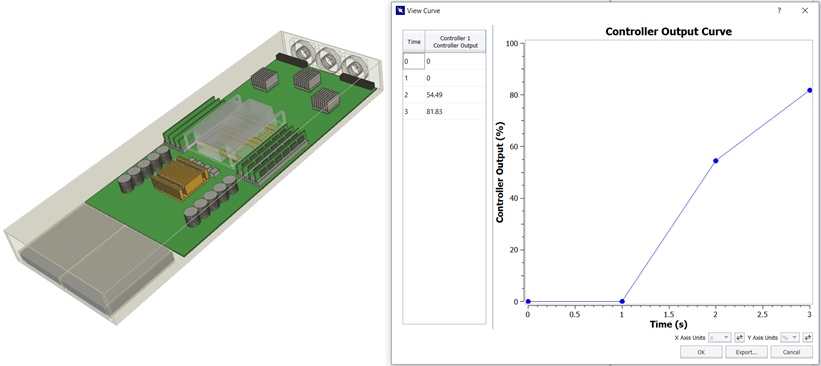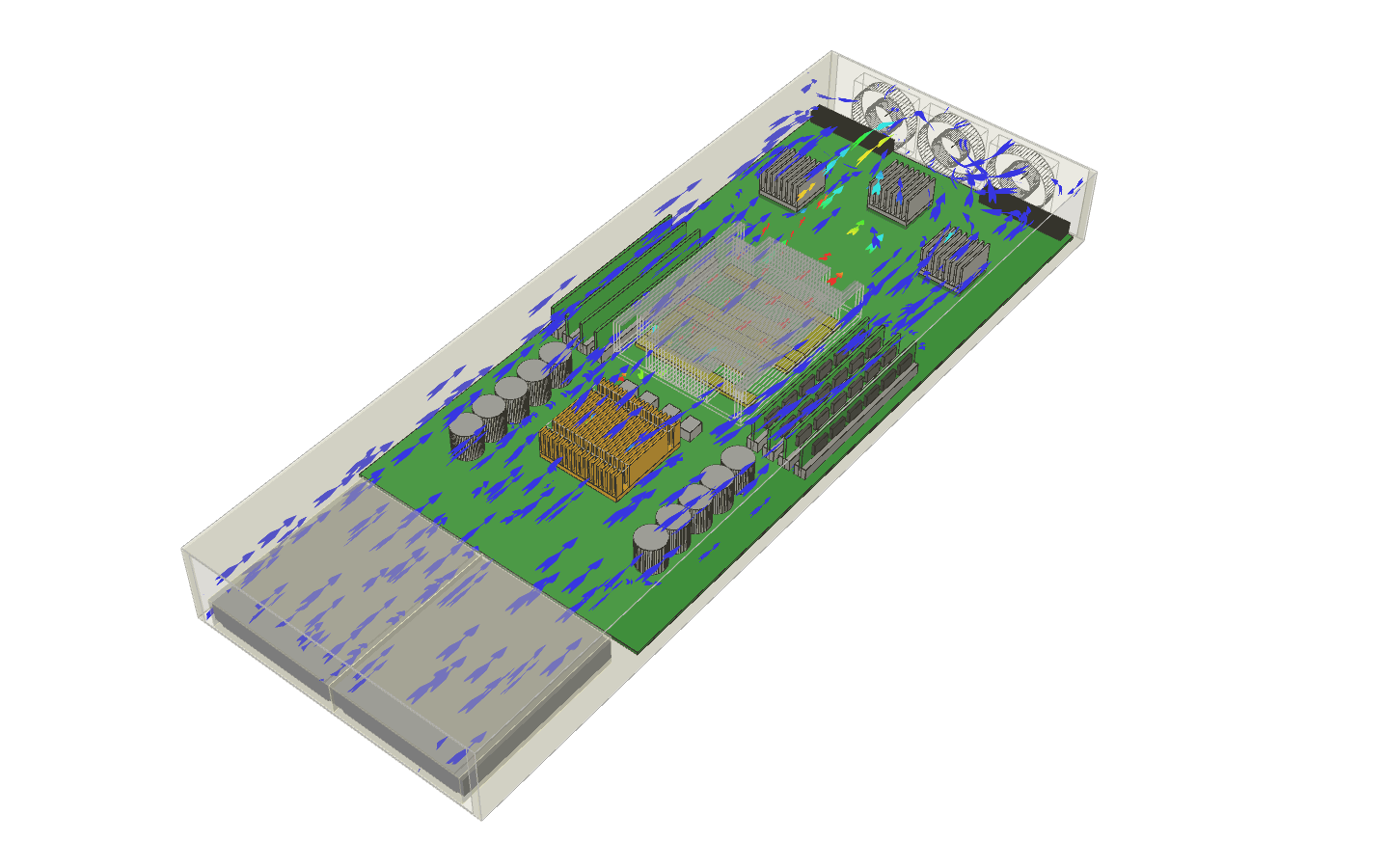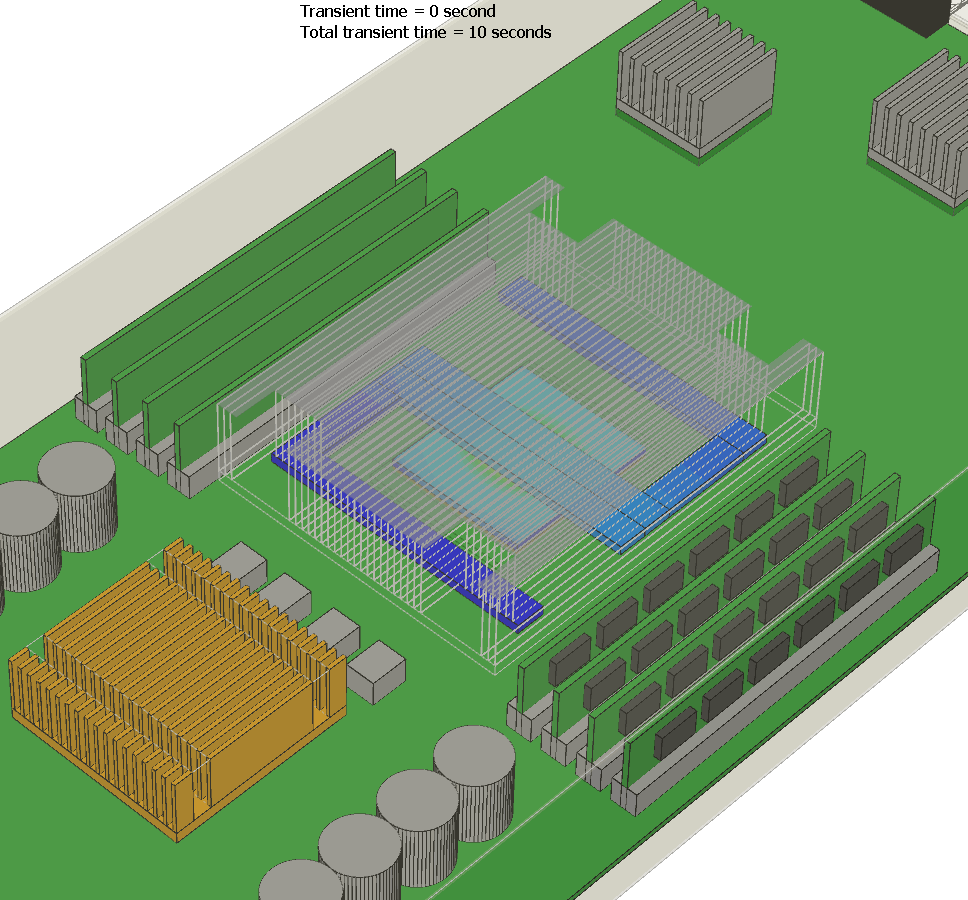Transient Thermal Analysis
What Is Transient Thermal Analysis?
Transient thermal analysis is the evaluation of how a system responds to fixed and varying boundary conditions over time. For fixed boundary conditions, the time to reach a steady state temperature can be evaluated, as well as how long operating conditions can be sustained before reaching a threshold temperature. For time-varying boundary conditions, transient analysis can show you the resulting thermal response of the system.
Frequently, transient analysis is used to evaluate transitions in operating conditions before the system returns to steady state. In such cases, it is typical to find the steady-state solution to one set of operating conditions and then perform a transient analysis using a different set of operating conditions. Transient analysis is also useful for evaluating control algorithms, using inputs such as time and temperature to control outputs such as power and fan speed.
Why Is Transient Thermal Analysis Important?
Transient thermal analysis is essential to electronics simulation. Whether you are testing control algorithms or cooling failures, the most critical processes are transient. Transient thermal analysis is how we learn about a system’s time-dependent response to varying conditions.
1. Transient Controls
Transient analysis is critical when designing and validating the control system. An engineer needs to know that the control system can keep temperatures below a certain threshold without too much of a performance impact. Standard control algorithms may throttle power to components and fans in order to manage heat dissipation within the system. If the device is being throttled too frequently, then they may need to improve the thermal management of the device as a whole. Control algorithms can be based on a temperature response, built in as a function of time during a known process, or some combination of the two. To accurately analyze controls, it’s important to have full control over the time grid to fully capture the heat transfer process.
2. Cooling Failure
Another common reason for employing transient thermal analysis is to evaluate cooling failure. Cooling failure occurs when a fan or liquid cooling system fails. Thermal simulation allows an engineer to understand how the system copes with the failure. This may be relevant for power throttling or controls designed to prevent component overheat and eventually full system failure. The above example is a blade server with three fans and examines the system temperature response to a single fan failure. The resulting temperature response can be used to inform control algorithms designed to handle such a situation, or the controls can be directly implemented into the simulation. Failure simulations are typically initialized with a steady state solution with full cooling capacity. The relevant fan(s) can then be turned off before initializing a transient simulation to determine the system response.
3. Transient Processes
A final example of transient thermal analysis involves the analysis of known transient processes. Many electronic products operate with frequently known, power-intensive processes. A device might include several components following different power profiles over time. The temperature response to these processes may be relevant to failure, durability, and performance analysis. Another situation in which this sort of analysis is relevant is when a system is subject to changing ambient conditions. Devices with outdoor applications may be subject to known fluctuations in temperature and solar radiation that are critical to reliability evaluation.
The above example relates to a startup sequence in which the component operating power increases over time to a steady state value. Optimizing this process may increase power performance that contributes to overall system performance. For devices with a frequent use-case (e.g., a camera), analyzing the system behavior during the process can be more insightful than any steady state analysis.
Transient Modeling with Cadence
When solving a transient model in Cadence Celsius EC Solver, there are a few important points to consider. The first is related to the time step. It is better (and often quicker) to model many small time steps than a few large time steps for a given simulation length. Smaller time steps result in more accurate transient results, and each time step will converge more quickly than a longer time step due to the small change between each step.
Transient Thermal Analysis and Thermal Simulation
Users have come to expect more powerful and complex, yet smaller and more compact devices. Engineers must create innovative solutions to manage rising thermal demands now more than ever. Transient analysis is so important because it enables engineers to push the boundaries of thermal management.


